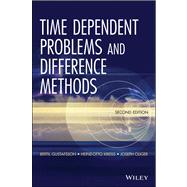

The existence of these diverse groups is a clear indication of the ability of bryophytes and pteridophytes to adapt to extremes of metal content of their growth substrate, either by avoidance of the toxic constituents or by expressing resistance/tolerance to metals at an organismal or cellular level. Pteridophytes are associated with serpentine substrates in various parts of the world, and several African species grow on copper-enriched soils or on soils polluted by metal-smelter emissions. No distinctive bryophyte flora were observed on serpentine soils. Other bryophytes are associated with lead- and zinc-enriched substrates. The best documented of these are the groups of specialized bryophytes found on substrates enriched with copper so-called ‘‘copper mosses’’ are found worldwide and come from widely separated taxonomic groups. Each of these groups of plants possesses certain anatomical and physiological properties that enable representatives to occupy unique ecological niches in natural and man-made metalliferous environments. Likewise, several associations of mosses, liverworts, and ferns are capable of growing on metal-enriched substrates. The most successful monitoring methods for metals in the environment are based on gene- and proteinbased bacterial heavy metal biosensors. Thus, the nickel selection pressure existing as a gradient around the hyperaccumulator plants has a dramatic effect on the composition of the local microbial population. Interestingly, the microflora that were not found directly beneath the canopy but in the same soil showed tolerance to lower levels of nickel (3 mM) compared to the resistant population. In fact, the predominant cultivable microflora found in the topsoil (bacteria, fungi, and protozoa) adapt to the high levels of nickel.

Quire resistance to high levels of nickel (⬎20 mM). The solubilized metal exerts a localized selective pressure on the topsoil microflora, which aciii

When the leaves are shed from the trees, the nickel is leached out into the surrounding topsoil. An interesting ecosystem is established in these biotopes driven by a nickel cycle, in which hyperaccumulating trees extract nickel from deep soil and rock layers and subsequently store it in their leaves (up to 1% Ni in leaf dry matter). Some of the best-studied nickeliferous biotopes are the New Caledonian soils, which are inhabited by nickel-resistant bacteria as well as metal-tolerant plants, many of which act as nickel hyperaccumulators. Serpentine soils contain heavy metals for nickel (averaging 10 mg per g of soil), as well as cobalt and chromium-both of which are present at lower levels than nickel and are characterized by high concentrations of iron and magnesium and low nutrient levels. Aquatic systems (freshwater, marine, and estuarine) act as receptacles for several metals.

For example, effluents from industrial and mining wastes have increased several thousand-fold the metal concentrations in river water and sediments. Heavy metals are being enriched in all aspects of the environment, viz., air, water, and soil, by anthropogenic as well as natural processes. Therefore, the collective work presented in this volume spotlights the potentiality of biodiversity for monitoring and abatement of metal pollution in the environment, and also explores the emerging issues and initiatives concerning metals in the environment. However, information about the utility of phytodiversity and microbial diversity for the management of metal-contaminated and -polluted ecosystems is rather scanty. Metal contamination and pollution in the environment, the significance of biodiversity conservation, and the root causes of biodiversity loss are emphasized in a wide array of works. Current printing (last digit): 10 9 8 7 6 5 4 3 2 1 PRINTED IN THE UNITED STATES OF AMERICA Neither this book nor any part may be reproduced or transmitted in any form or by any means, electronic or mechanical, including photocopying, microfilming, and recording, or by any information storage and retrieval system, without permission in writing from the publisher. For more information, write to Special Sales/Professional Marketing at the headquarters address above. 270 Madison Avenue, New York, NY 10016 tel: 21 fax: 21 Eastern Hemisphere Distribution Marcel Dekker AG Hutgasse 4, Postfach 812, CH-4001 Basel, Switzerland tel: 41-6 fax: 41-6 World Wide Web http:/ /The publisher offers discounts on this book when ordered in bulk quantities. ISBN: 0-8247-0523-8 This book is printed on acid-free paper.


 0 kommentar(er)
0 kommentar(er)
